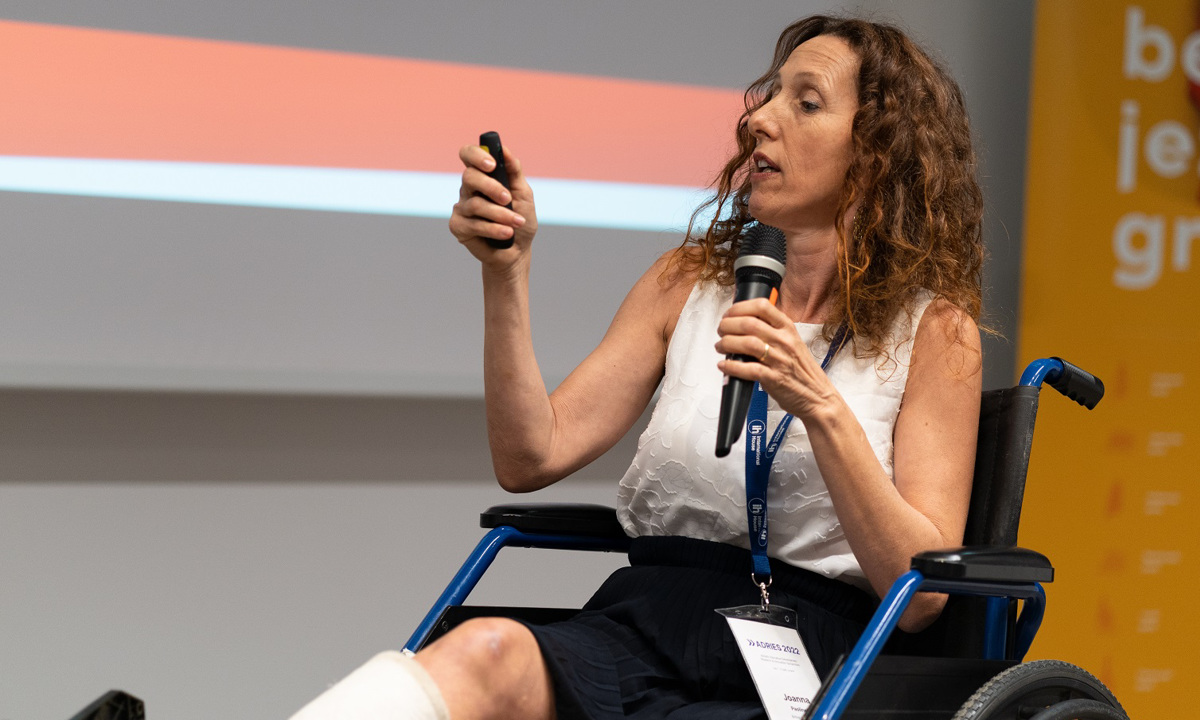
How NGPT is an inclusive test
Photo: Joanna Paolinelli, author of the blog
I have been asked many times why English is difficult for students with dyslexia.
Perhaps one of the reasons is that it is an orthographically deep language with 26 letters but with 44 sounds. Even the word phoneme is spelt with ph when it would be more logical to be spelt with a “f”. In addition, students with dyslexia have difficulties with visual interference which makes reading long passages and small text more difficult. Many students also have issues with working memory which is the ability to hold and manipulate information in memory. This causes issues with retrieving the correct information needed to complete a task and means that they need to work on memory techniques as well as needing more time to do tests.
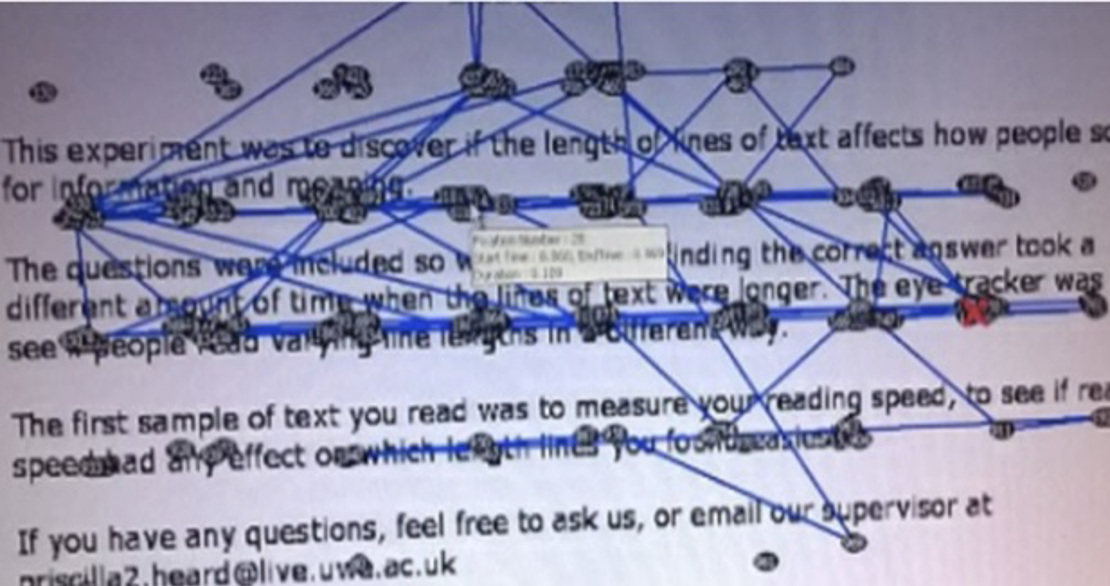
Image: eye movements of a dyslexic reader compared to controls
Reducing visual stress
It is important not to have too much text with many questions related to that text as this would involve more eye movements up and down the page. This could result in the test-taker answering the wrong question and needing more time. An example of this is the classic reading part 2 Key exam when the students have to read different texts and then choose the correct answer. Therefore, this type of question should be avoided.
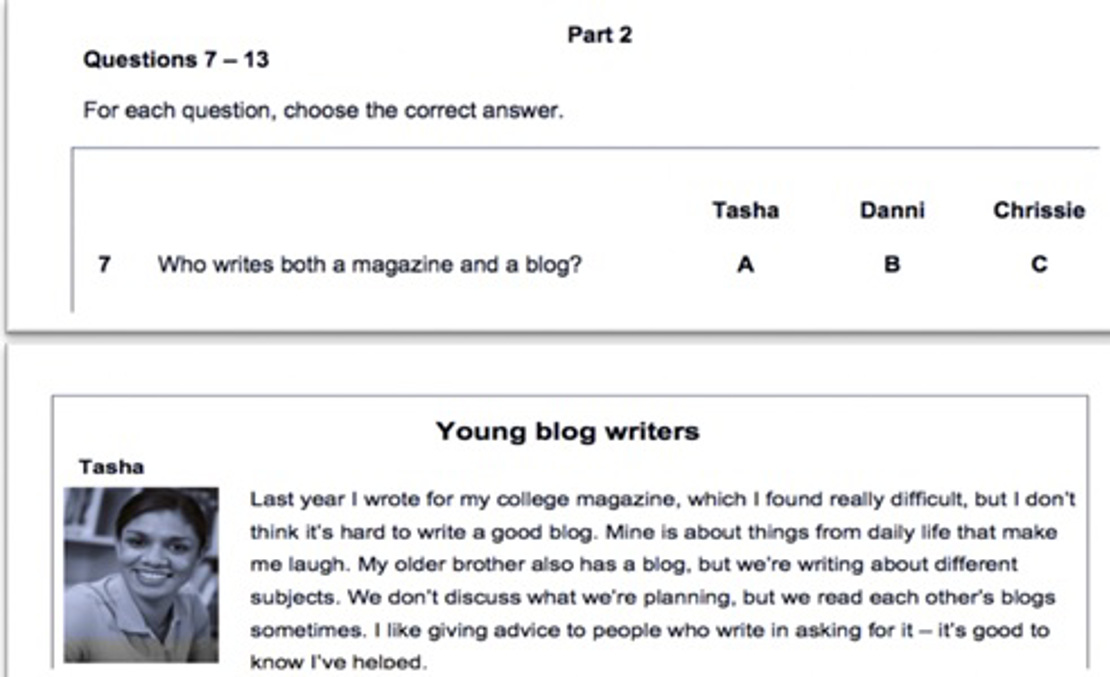
In some countries, X is used for correct answers and in an inclusive test another way to choose the correct answer should be used. The NGPT has avoided using ticks and crosses in the questions.
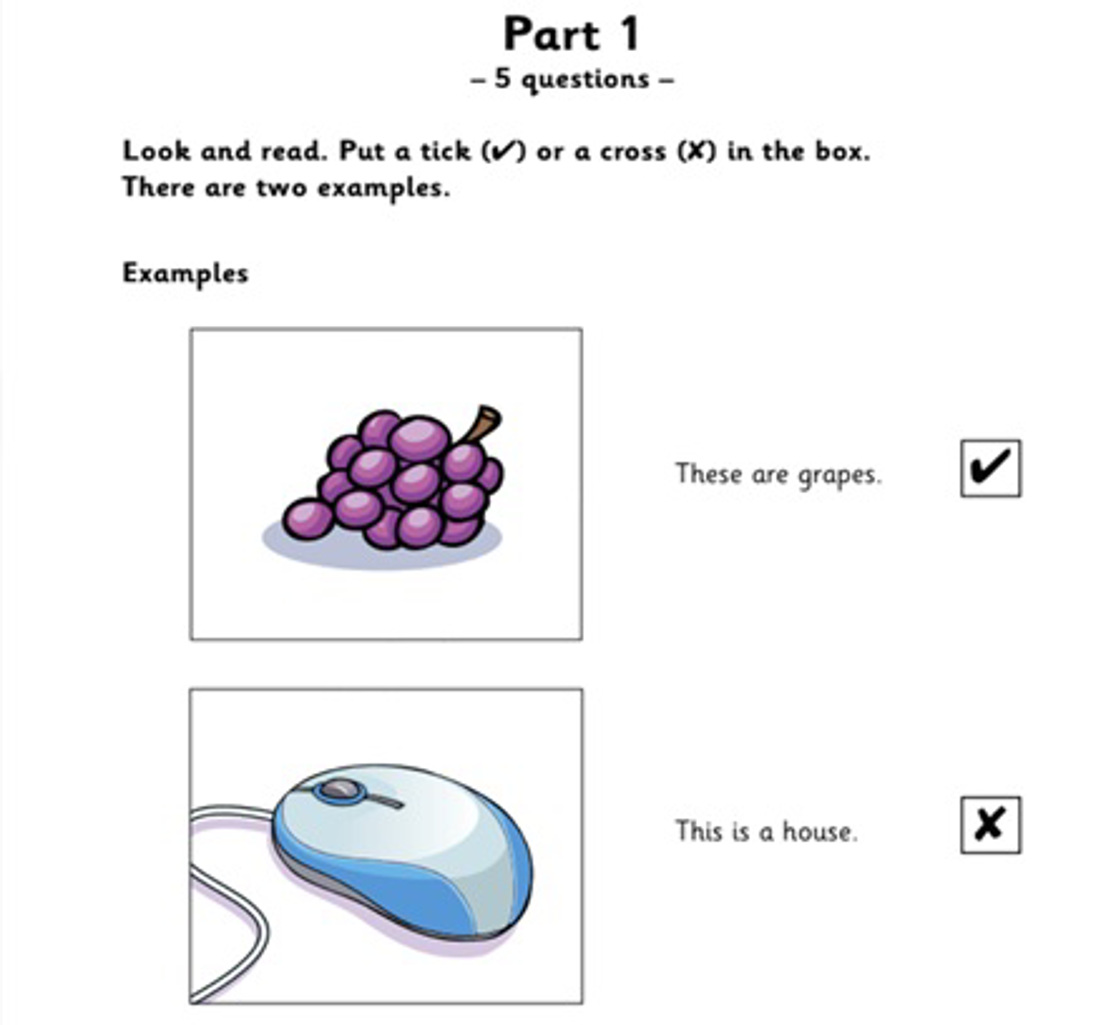
People with dyslexia often take longer to retrieve words from memory. This classic reading task could be made more inclusive by giving a dropdown answer within the text. At the same time it reduces visual stress as the test-taker does not have to scroll up and down the page to insert the correct answer which can cause distraction, is more timely and can lead to the test-taker making more mistakes.
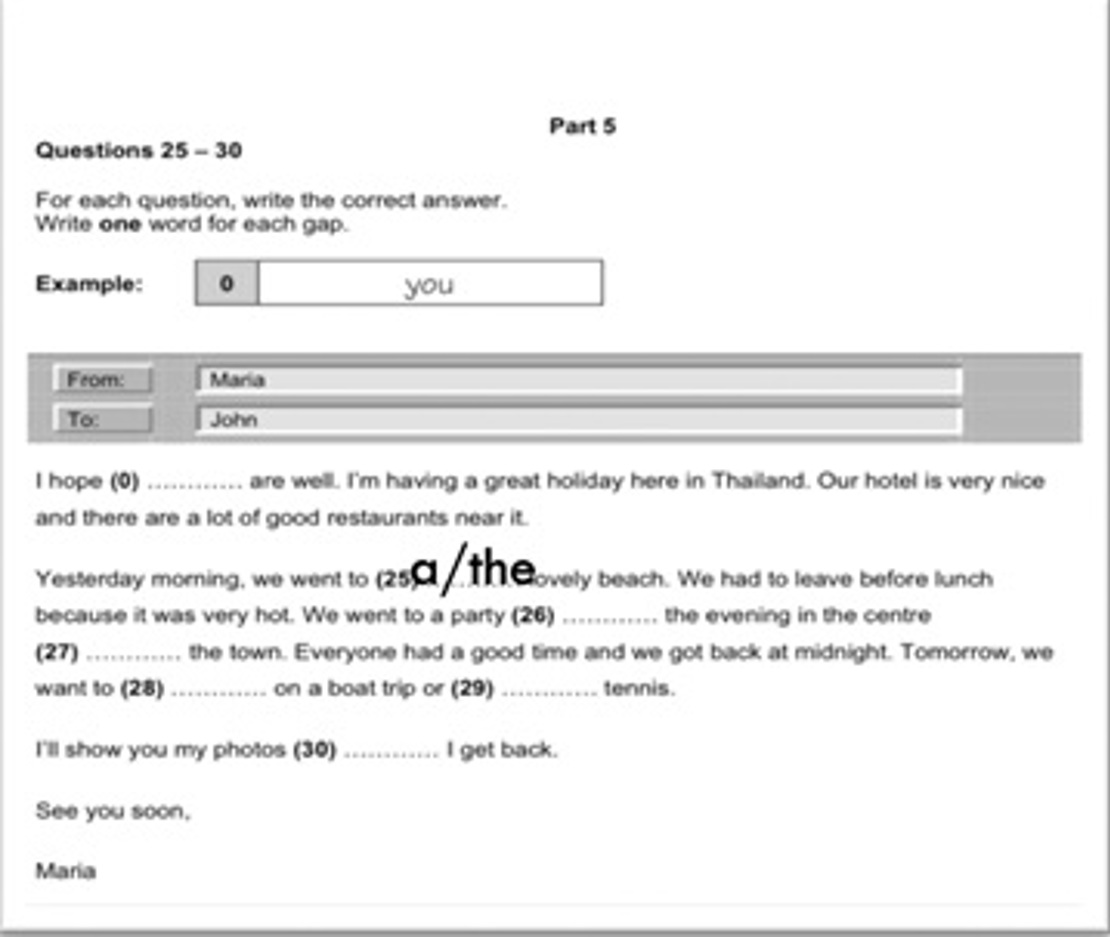
Confusing images
Students with dyslexia use top-down reading strategies where they look at images, titles and anything on the page that helps them to understand the context before they read. Tasks such as the one below can confuse readers as although they may understand the correct answer it is possible that when they complete the task the image confuses them and they choose the incorrect incorrect answer. Confusing images were not used in the NGPT.
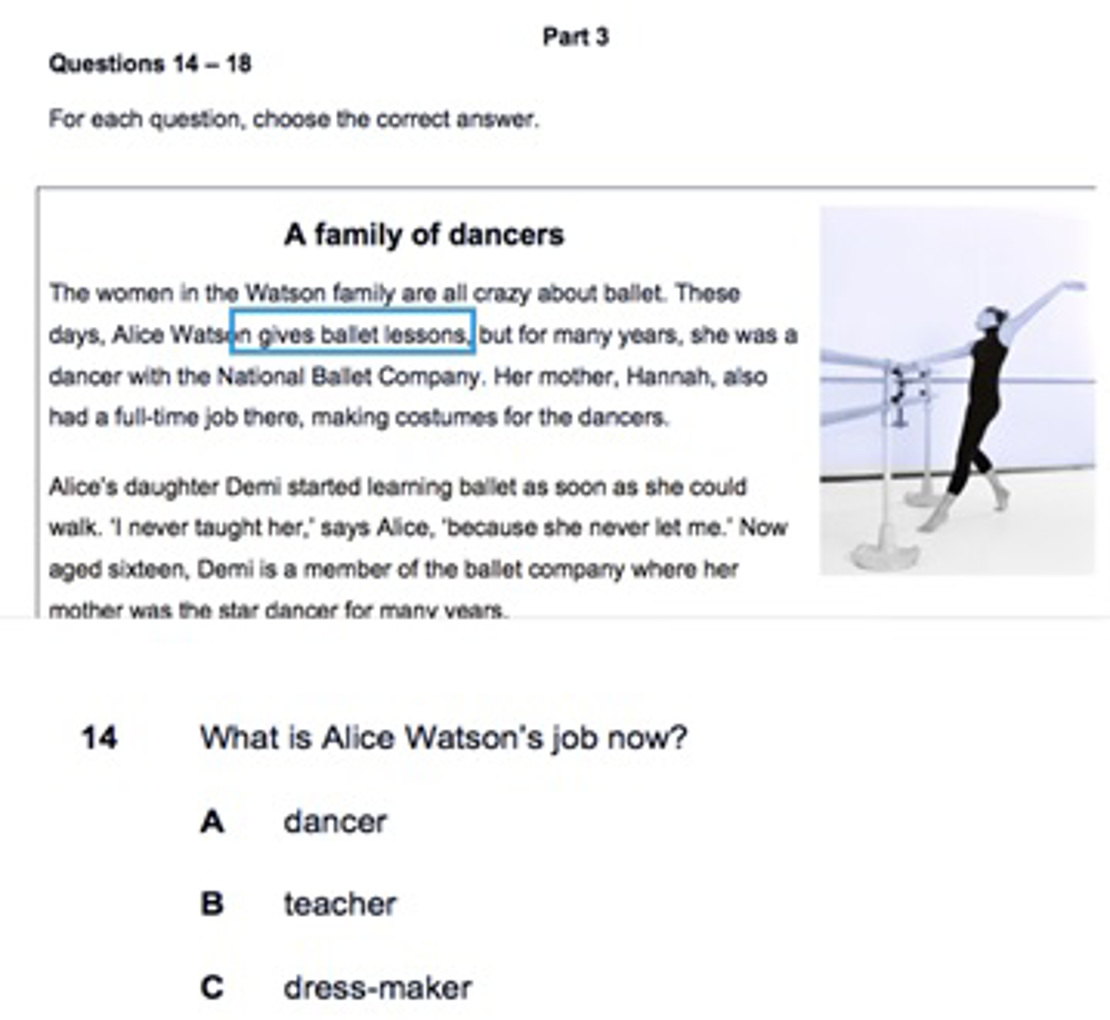
Length of texts
In order to make the NGPT more inclusive, short texts were selected. Certain exercises were avoided ( i.e. putting letters into order) and tasks with a dropdown menu were used to reduce overload on word retrieval and to help visual stress so that testakers avoid having to have to look up and down for the answers.
Time limit
If a time is being used as a measure in the tests, then in order for the tests to be inclusive there must be an extra time option for test-takers. Extra time can resolve many of the problems related to automaticity. The NGPT does not have a time limit and this is another inclusive aspect of the test as this helps the issues related to reading and working memory
The NGPT was designed with these issues in mind and even the fact that it is a digital test of course makes it more inclusive. The Erasmus team believes in inclusion and technology is helping to make sure all learners are given equal opportunities to learn.
